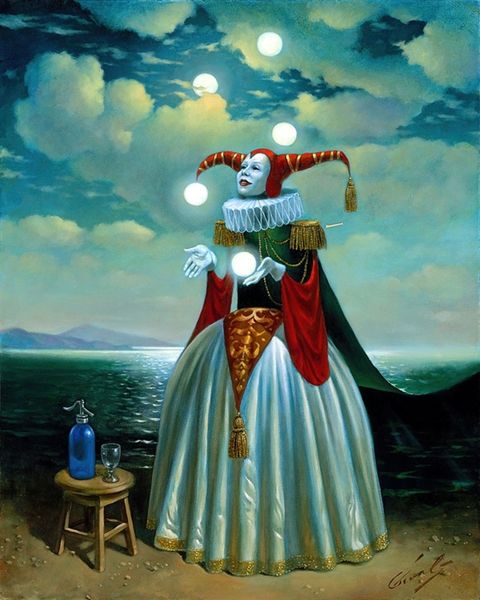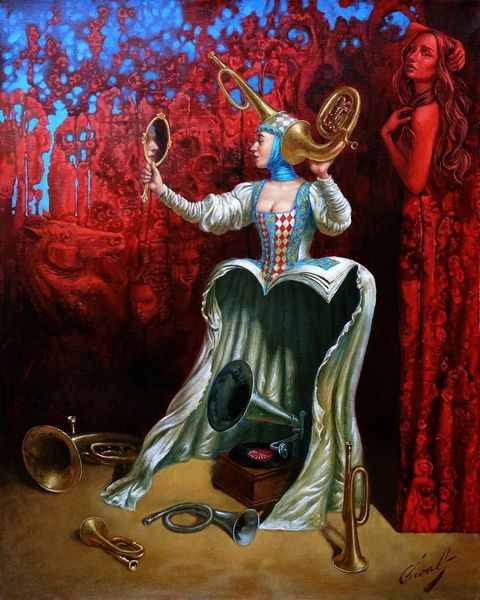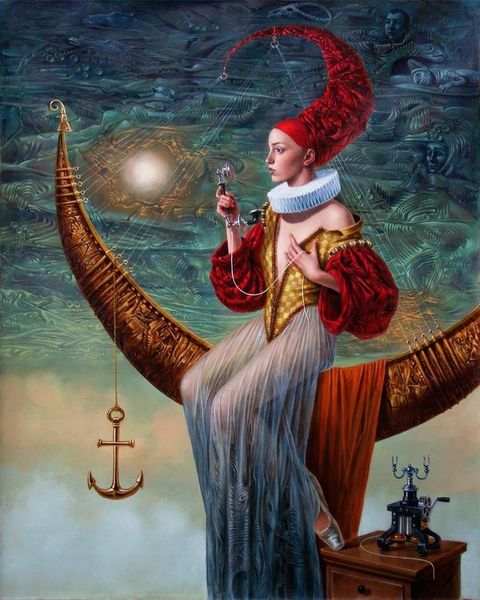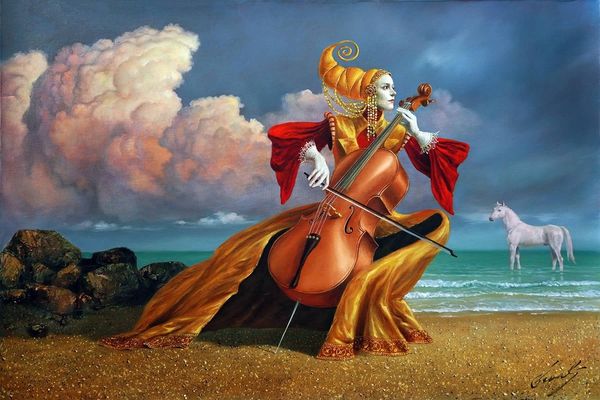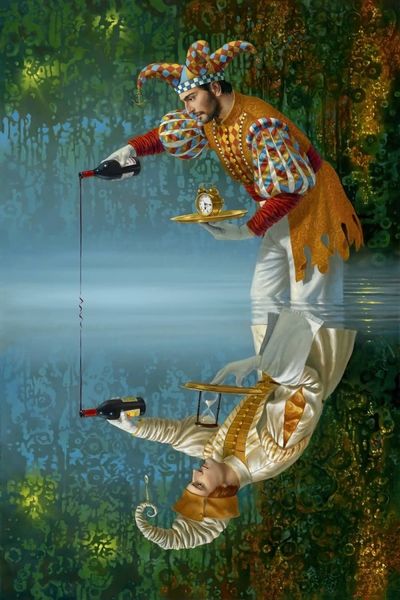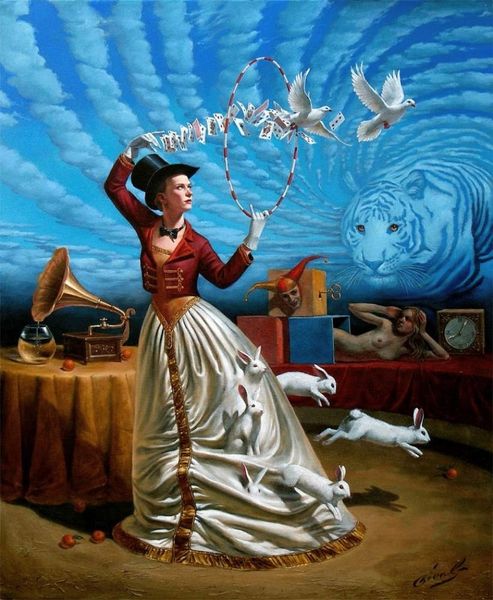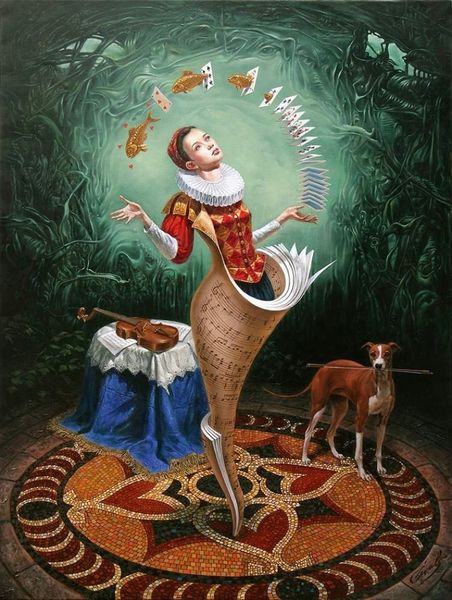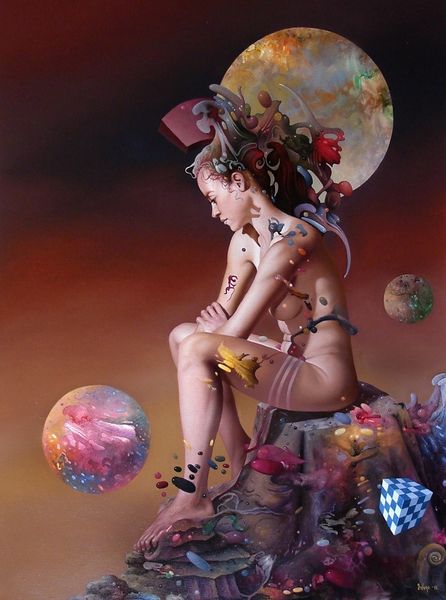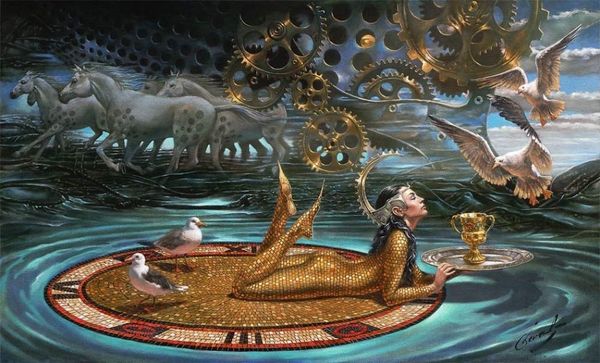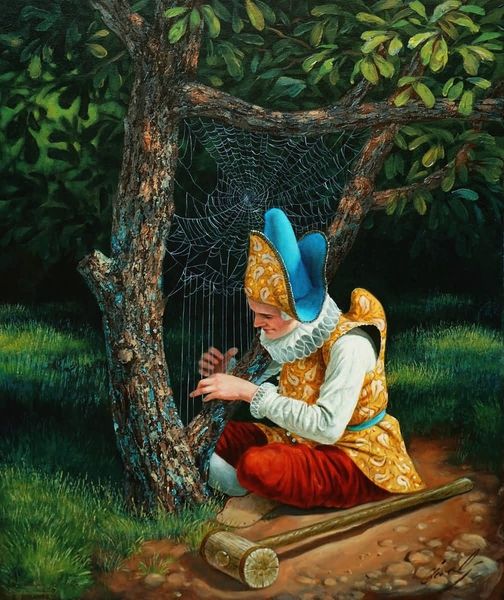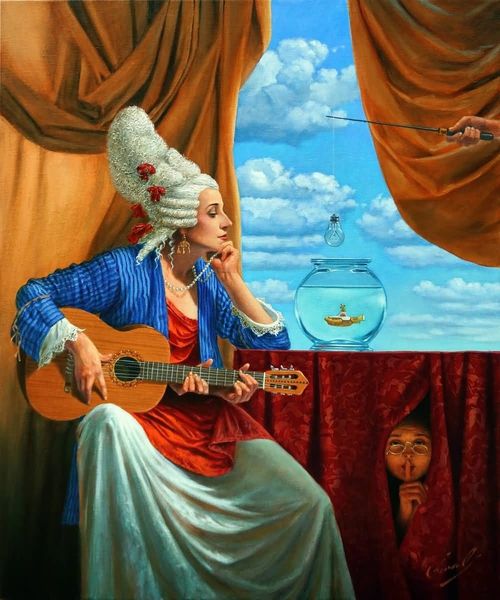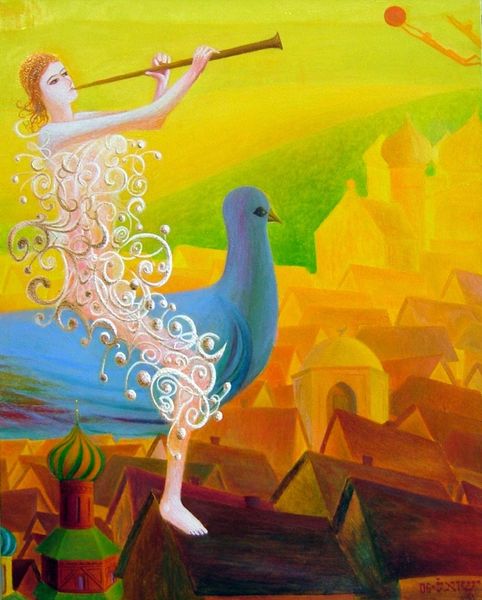
painting, oil-paint
#
portrait
#
narrative-art
#
painting
#
oil-paint
#
figuration
#
neo expressionist
#
surrealism
#
surrealist
#
surrealism
#
portrait art
#
realism
Copyright: Modern Artists: Artvee
Editor: This is "Comparative Analogy II," an oil painting by Michael Cheval. It feels very dreamlike. The figure, a sort of jester, is juggling unusual objects. What draws your attention when you look at this work? Curator: Immediately, I'm struck by the material juxtapositions Cheval presents. The jester’s elaborate costume, likely machine-produced fabrics mimicking handcrafted details, is placed against organic objects - a snail, fruit, blocks perhaps carved from wood. This brings up questions about production. Consider also how the figure’s pose – seemingly effortless balance – required immense labour to achieve in reality, and consider how that resonates in relationship to artmaking and what’s considered work or skill. Editor: That's an interesting take, I wouldn't have considered it like that. Are you saying that by placing these contrasting materials together, the artist is commenting on consumerism and the value of craftsmanship? Curator: Precisely. Look closer. Even the 'natural' elements are manipulated – cubed fruit, the controlled 'dangling' electrical cords and the mask on the figure. It highlights the constant intervention humans enact on nature, often obscured by marketing that fetishizes handcraft. What labour goes into creating these "organic" objects as commodities, too? The painting foregrounds questions around how we fetishize and commodify not only art but the natural world itself. Editor: So, it's less about the symbolic meaning of each object and more about their existence as produced things? Curator: Yes, and the performance inherent in their display and our consumption. The painting challenges a simplistic view of surrealism that relies purely on symbolism by making us conscious of how these images are manufactured and circulated. Where does the power lie? Editor: This really shifts my understanding of the piece! It’s like a commentary on the system that makes art possible. Curator: Exactly. Seeing art through a material lens opens up critiques about social conditions surrounding labour and value, and our relationship to the wider capitalist structures which perpetuate them. Hopefully this insight informs our own contribution to that story!
Comments
No comments
Be the first to comment and join the conversation on the ultimate creative platform.
